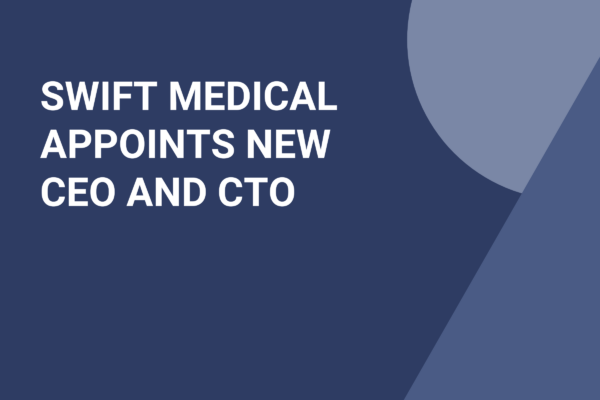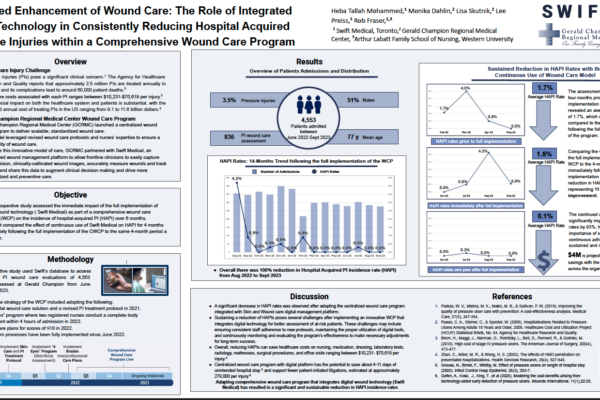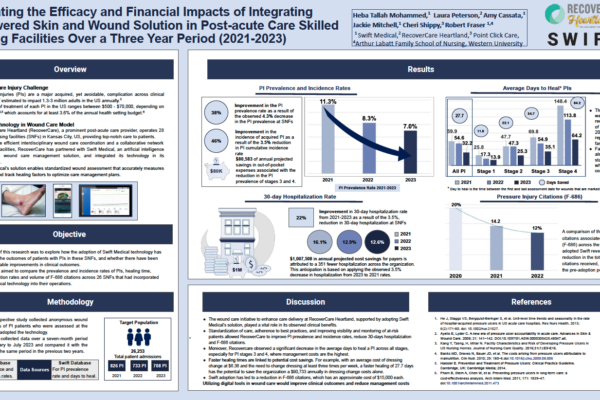The Challenge (and the Opportunity)
Do you see your staff struggling with burnout? Are you struggling to build a wound care program because it’s hard to find and retain wound care nurses? Do you feel stretched thin? Are you looking for a better way to do wound care for home health?
You’re not alone.
- 8 million medicare beneficiaries have wounds
- 9.4 million new wounds are expected by 2025
As you know, wound care is big business. But for many agencies and health care providers, wound care is also a significant problem. In addition to staffing changes, outdated (or total lack of) technology makes it hard to document wounds accurately and consistently. This not only has an impact on patient outcomes, but it also increases regulatory and legal risks.
- $103B spent on home health care in the U.S. in 2018
- 1 in 3 home health patients require wound care
- 6 million wound care claims are made each year in home health
ASHN Explains their Blueprint for Success
We wanted to show home health agencies how to make effective change to their wound care program. Further, we wanted to show them that they could do this even in the midst of busy agency life. We sat down with industry leaders to learn about how they approached change and built a best-in-class wound care program despite the challenges agencies face.
Khristen Haworth of ASHN, Chip Sloan of Homecare Homebase and Amy Cassata of Swift Medical share their insights and ideas in the resultant webcast. Their advice provides strategies that will boost confidence in your processes and give your team the tools they need to deliver consistently exceptional care.
–
There will never be a good time to overhaul your wound care program for home health. Follow the blueprint outlined by ASHN that helped them systematically identify and pull key levers that have maximum impact.
Amy Cassata, VP Clinical Operations at Swift Medical
–
The webcast outlines the practical changes you can realistically make now. It discusses how a structured approach can improve operational efficiency, make better use of technology, and lower the risks of providing wound care. The webinar also examines why using data in smarter ways can help you solve some of the biggest problems in wound care.
Here are the top 5 problems covered in the webinar, and what you’ll learn:
- Focus – The business opportunities in PDGM, and how to use data to gain more insights.
- Staffing – Why retention is essential, and how investments in the right tools can support your staff and boost operational efficiency. Learn how leading agencies are approaching retention to make it easier.
- Maximizing Impact – Strategies and ways to use technology so you can get the most from your WCCs and WOCNs.
- Standardization – How new technologies ensure patients get the best care, keep your organization compliant and protect against legal challenges.
- Future-Proofing – Doing wound care with a paper ruler is not optimal. It simply doesn’t let you collect the data you need. It also leaves far too much room for error. Industry leaders highlight how smarter use of data helps you deliver better care now. This lets you stay nimble so you can adjust more quickly to changes in the future.
If you are a home health leader looking for ideas to tackle some of the most challenging problems in wound care, this webcast is for you.
Watch the webcast on demand now:





